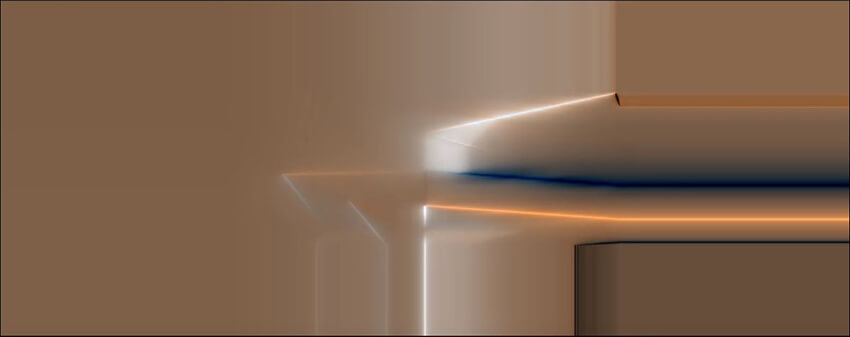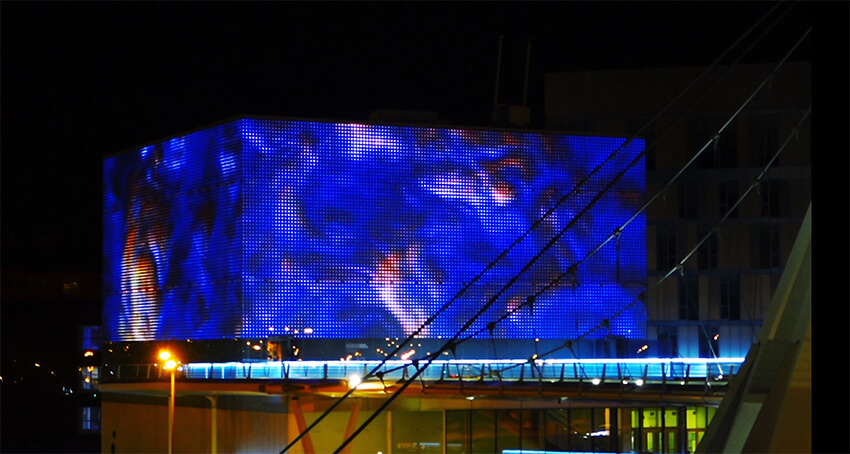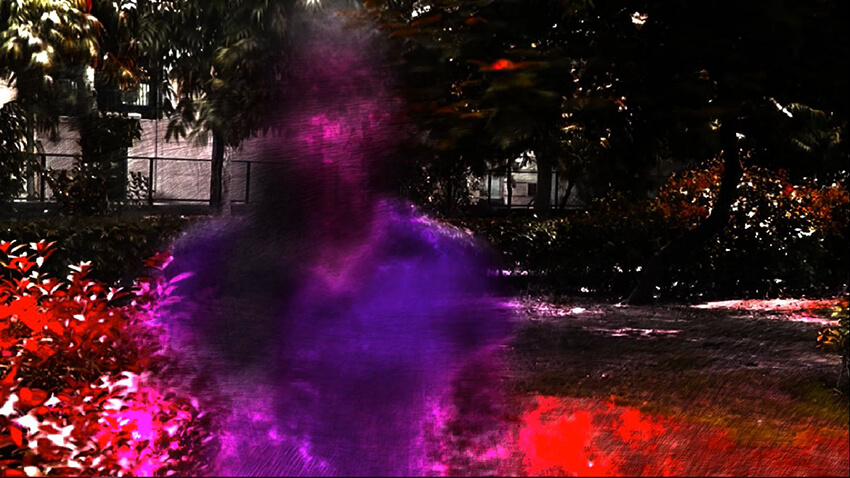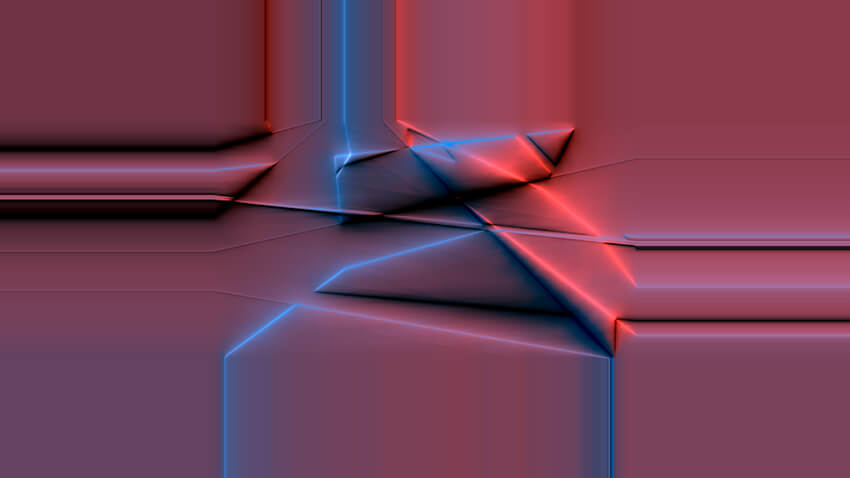Interview by Jack Apollo George

Paint is applied but then stays present and defined. It sits atop the canvas, leaving a trace of activity, a mark made onto the world. Paint bleeds into surfaces and blends above them. It provides meditation for the painter and can change the way that observers understand the material world that surrounds them. When well executed, it can provoke a shift in the way that we interpret reality and open our eyes to whole new ways of seeing.
Of all artistic mediums, it is probably the one with the richest history and most influential tradition in the Western canon. When I say art, you think of paint. When I say museums, you think of paintings. But with the advent of new technologies, from the very first photograph to the latest developments in computer vision, our ability to represent the outside the world has only improved. Yet we still often harken back to the splash of colour on canvas, the brush bristles dripping, the style of the stroke rather than the accuracy of the image.
But what happens when you ask a machine to paint? What happens when you ask a computer to look at the world and paint, not represent, not copy, but paint what it sees? Is it perverse to instruct a machine to make digital marks on a screen as if it was holding a brush? Why does it still somehow give us more of a feeling that it is art, even when we know that it is merely lines of code being executed in order? Why do we hold the semblance of painting as touching upon a higher aesthetic ideal?
Jaime de los Rios is an artist born in San Sebastián, Spain, who was studying engineering when an exhibition galvanised him to explore the world of digital and generative art, merging his interests in the mechanisms of the future with his life-long love of painting. By flowing and suggesting ideas, vectors instead of symbols, and directions instead of destinations, new technologies and paint alike represent an infinity of possibilities for de los Ríos.
He wants to create immersive environments that echo the natural behaviour of computational processes. Like humans, machines will perform and create in ways that seem more innate to one than to the other. Think of a straight line or ‘glitch’ art. That intersection, bringing that computational nature into human spaces or making the machine act through brushstrokes and not keystrokes, creates a compelling study.
As a man who sees creativity as a way of reaching out to others, he wants his art to be inclusive and collaborative. In 2007, he founded the open laboratory of Art and Science ARTEKLAB. It was one of the first production and research spaces to focus on the hybridisation of art and science explicitly. In de los Ríos’ view, science is the question, and technology is the tool. But when science and technology are used to further political goals, often alienating individuals, it is up to art to assess that distance, to expose the manipulation.
Recent projects like Moving Pictures and wPortraits present painting-like forms generating themselves slowly over time. The latter takes frames from online user-generated content and then paints over them. The frames change from one to the next slowly, presenting a ghostly algorithmic look into the lives of hundreds of strangers, streaming themselves into digital space. There’s an uncanniness to them but also the child-like familiarity of someone using a painting software to colour in a photograph.
Like his fragments of proto-moving pictures, dubbed paintings, I exist in that in between. All made up of generated plotter series, they somehow manage to hint at the light-work and meteorology of Turner, the tempestuous darkness of later Goya.
An expert in free software and hardware, Jaime de los Ríos works in a space where the promises of the online, open-source, maker movement have been co-opted by a capitalist enterprise. There is something refreshing yet eternal about his use of modern auto-generative art to suggest the oldest of artistic crafts: painting.



For those who are not familiar with your work, could you tell us a bit about your background and when and how the fascination with the crossover of art and science come about?
Since 2007, I’ve been working precisely at the intersection between art and science. It’s an interest born from contemporaneity and the world I inhabit, which generates questions that, for me, can only be answered from a trans-disciplinary viewpoint.
Over the years, I’ve seen first-hand how philosophical visions have been given form, first through art and later in everyday life. Issues such as Big Data, Artificial Intelligence, or systemic have (initially/originally/primarily) been explored by artists, and we have to take some responsibility, both for good and bad, in how they’ve been implemented at the social level.
You are also the founder of the open laboratory of Art & Science, Arteklab. What are the main ideas behind it?
Arteklab was created out of the desire to face life with aspirational thinking and practice. It’s common in the ever-changing landscape of New Media to confuse the practices of Art & Technology with those of Art & Science (hybridization). At Arteklab, which is first and foremost a network of artistic production and research, we know that when we work with technology, we are also being political, reflecting on the use of devices in a hyper-technological society.
On the other hand, when we hybridize art and science, even in a theoretical way, we work by questioning the most primordial aspects of human beings. Science is the question, and technologies are the tools that come from it, but at the same time, these tools are selected specifically by the system, in this case, capitalist (or communist) society, not only to maintain but to strengthen the status quo.
Recently Arteklab turned 11 years old, and in these 11 years, we have tried to collaborate with and learn from our contemporaries; cyberfeminists, trans hackers, artivists, post-capitalists, techno-anarchists… The list is very long, and I hope it keeps growing, always having this critical spirit as a flag. Recently we embarked on a new journey, a new line that we consider important.
We took the addivist cookbook manifesto, written by Moreshin Allaharin and Daniel Rourke, and translated it into Spanish, proposing several workshops that we call postmakers, recovering the utopia. The spirit of this project is to assess the extent to which 3D printing, the Fablab phenomenon and other technologies have fostered a new, neoliberal revolution, bypassing the hacker, the ecosystem and emancipatory values that in principle, promised us the maker movement.
You presented one of your pieces at the digital design weekend 2018 at the V & A, wPortraits. Could you tell us a bit about the intellectual process behind the piece?
wPortraits is a very special piece of work for me. Shortly after turning 40, I became very interested in youth culture. I realised that I had lost contact with young people, their music, fashion, culture, art and so on. These things were incomprehensible to me, so I decided, instead of opposing them and getting old, to start sharing their spaces.
In this project, I created a bot algorithm whose function was to search for videos and hashtags in trending topics. The premise was self-representation: cam, challenge, and choreography. The bot, a ‘plainairiste’ in the Internet era, then composes and redraws (with a sophisticated particles system and several pictorial techniques that I have been developing) frames in movement that reflect the way in which the new generations portray themselves in the new window to the world: social media.
‘Spaces’ such as YouTube or TikTok are places inhabited by millions of people from all over the world, people who dance and laugh and share their lives with us. How else can thousands of traditional situations be represented as they are today? We are going out to the ‘street’, as was done in places like Paris in the early twentieth century, only this time with the almost infinite capacity of an algorithm tracker and painter, a tool used by the great Internet monopolists.
Portraits, still life and landscape, along with the heritage of pictorial representation that we’ve seen throughout history, things such as the sexualisation of women, the great men, the exaggerated poses, have all reemerged, and these things have played a role in the construction of digital identity. This is interesting, but it’s not a coincidence.
This is the first figurative work of my digital pictorial career. It’s a challenge that nevertheless fits perfectly with the new paradigm of the image. This is in parallel to globalization from the East, from China and Korea in particular. It is from these places that we are importing a new way of understanding art and culture. In the West, we have a fixed image, the capturing of a moment in time. This is not as important in the East. What’s important is what derives from the moment, what we get from the passage of time.
This is reflected in the way videos are deleted after an hour, or after a certain number of ‘likes’, and above all, in the minimum value of authorship. We can see that there is a great similarity in the way that the millennial generation interacts with art, an object in constant flux, whose value is not that it is perpetual but that it is the symbol of an age. Neo-Globalisation is coming, but we don’t want to realise it.
In Moving Pictures, you use the concept of digital materialism and autopoiesis (autopoiesis, from Greek, is a biological term meaning self-creation, and refers to the self-maintaining chemistry of living cells). How do these concepts blend into the artwork, and what challenges did you face in its development?
First of all, thanks for the question. It should make us think not only about Moving Pictures but also about the function of Art and the tax function that it has had up to now. The reference I make to autopoiesis, which is, as you indicate, a biological term, is to place communication between the art and the audience. The link is not properly interactive, but through contemplation, a new meaning emerges, creating a new piece every time.
This great work presents an ironic evolution towards large canvases in the era of algorithmic reproducibility, recalling masterpieces of pictorial expression, worked from an autopoietic computational abstraction of infinite solution, whose materiality comes from a system that expands, collapses and rebalances. Its passing is a constant search, a personal process I share with visitors in these paintings in movement, canvases in constant change.
Sometimes in the privacy of observation, I coincide with the brushstroke of Monet and sometimes with the grandeur of Turner, but I also occasionally find the light of Zobel. It is my private adventure towards a great passion: painting.
The projected digital canvas, an infinite piece whose algorithm will continue to draw until the end of time, fulfils the first premise of autopoiesis: self-maintenance. By not containing any semantic component, when the work is contemplated, a human-machine system is generated, in which the human and the art construct a meaning based primarily on the audience’s memories and dreams.
This then becomes the driving force of a process that can be observed in the digital canvas. With their contemplative gaze, the audience activates their own story. It’s a system I learned by rescuing many other projects of my past related to the laws of nature, laws that emerge from meditative contemplation, from observation of the elements; the clouds, the sea, the falling of leaves or the movement of schools of fish.
From programmable matter, 3D/4D printing and biological design, and human interaction with digital interfaces, the material seems to be blending more and more with the digital. Where do you think we are headed in terms of new digital materialism?
The technology that we create and accept is an extension of our bodies. I understand the body as our physical or virtual presence in any of the three fields as described by Roy Ascott: tangible, shamanic and virtual, all of which correspond and conform to multidimensional reality.
At the gates of the quantum, multi-telepresence-era (which is about to bury the digital era), we must review cybernetic feminist concerns, the hybrid subjects posed by Haraway, or the Art Oriented Object performance “May the Horse Live in Me.” All of this, in my opinion, is opposed to the binary foundations on which the patriarchy has been built. We can see it in the materialisation of the supposed dreams of the augmented man: more arms, more ears, and more strength.
I believe that the following stages of human understanding will come through breaking the standards of current mathematics and physics and, above all, our concept of the universe and the individual.
What direction do you see your work taking into?
My Art is a personal path to spiritual liberation. I share with others what excites and interests me. I have mentioned before that in the previous projects, I have researched pictorial techniques that I’ve been developing, techniques that are exclusively algorithmic: the fusion of digital colours, infinity, the dissolution of the moment, or constructivist narratives.
I will continue painting, but at the same time, I will continue to be the opposite of a painter; a rescuer of drifts and promises, a traveller who loses himself in his own labyrinthine creations, heading towards a future that, like Borges’ ‘Library of Babel’, contains all the possibilities of the universe. I will remain open-minded, and willing to be surprised, and of course, I will continue to meet and work with creative disrupters who follow my way with light.
Soon I will present a new way of intervening with nature, and you will be the first great friends of CLOT, to know about it. It is a project that started many years ago, and I am very happy with the tests. Furthermore, throughout March, I will be exhibiting Moving Pictures in Etopia Art and Technology Centre, one of the largest digital facades in the world.
What is your chief enemy of creativity?
The great enemy of creativity is pretentiousness and falsehood. Those who preach a political discourse but do not practice it. Those who tighten the clutches of the most atrocious aspects of capitalism and then sell smoke. Those who do not feel, do not love. Those who only have time for their own art, who do not read or enjoy what everyone else is doing. Although these are the people who matter least to me, they can make you waste your time.
Technological art, it’s also similar to contemporary art, the curators, due to their lack of knowledge and passion, only select pieces. It is very rare that they select artists. So what we have are exhibitions that talk about post-potato, post-robotics, and post-smart city. It works with little soul since we are rarely able to internalise the vital discourses that are the true art of life.
I recently commissioned an expo in which I studied the archive of some of the most famous festivals in this ecosystem, a marvel of history that allowed me to see the precariousness that has been fostered in this field, whereby artists who participated were never again dedicated to art. What an art that is, one that kills its own artists!
That being said, they leave us easy solutions – create commissaries in AI that know how to search different tags in Google but do not share time with us, do not break the idiosyncrasies of the lobbies, and remain, within their white cubes, in the methods of capitalism where they impose Western subjectivity.
You could not live without…
Passion. It is undoubtedly the best of humanity, and in general the best of the people who make up the New Media Art world. For me being an artist is a gift that keeps on giving every single day. Far from the idea of success, Art opens borders and establishes bridges between passionate people. It is a way of life that enhances the spirit, be it through friends, affinities or love. It is a point of pride for me that I don’t spend a single day on the couch, watching life pass by.
In 2006, while studying engineering, I visited an impressive exhibition by Charles Sandinson in the Koldo Mitxelena in San Sebastian. There I discovered the beauty that could emerge from genetic algorithms. The following year I attended a seminar on hybridization, which underlined the wonderful work ‘Luci’, by Josè Manuel Berenguer, as an icon of this discipline.
Currently, I am working intensely in LaAgencia and The Beep Collection of Electronic Art, restoring, installing and maintaining the works of great characters in the history of New Media, Sandinson’s among them. I even had the honour of installing Berenguer’s ‘Luci’ with my hands on a few occasions. These are only some of the surprises life gives when passion reveals a path, a path which, in reality, has no end.






